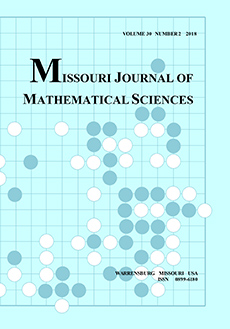Abstract
The classical Intermediate Value Theorem (IVT) states that if $f$ is a continuous real-valued function on an interval $[a,b]\subseteq\mathbb{R}$ and if $y$ is a real number strictly between $f(a)$ and $f(b)$, then there exists a real number $x\in(a,b)$ such that $f(x)=y$. The standard counterexample showing that the converse of the IVT is false is the function $f$ defined on $\mathbb{R}$ by $f(x):=\sin(\frac{1}{x})$ for $x\neq 0$ and $f(0):=0$. However, this counterexample is a bit weak as $f$ is discontinuous only at $0$. In this note, we study a class of strong counterexamples to the converse of the IVT. In particular, we present several constructions of functions $f \colon \mathbb{R}\rightarrow\mathbb{R}$ such that $f[I]=\mathbb{R}$ for every nonempty open interval $I$ of $\mathbb{R}$ ($f[I]:=\{f(x):x\in I\}$). Note that such an $f$ clearly satisfies the conclusion of the IVT on every interval $[a,b]$ (and then some), yet $f$ is necessarily nowhere continuous! This leads us to a more general study of topological spaces $X=(X,\mathcal{T})$ with the property that there exists a function $f \colon X\rightarrow X$ such that $f[O]=X$ for every nonvoid open set $O\in\mathcal{T}$.
Citation
Greg Oman. "The Converse of the Intermediate Value Theorem: From Conway to Cantor to Cosets and Beyond." Missouri J. Math. Sci. 26 (2) 134 - 150, November 2014. https://doi.org/10.35834/mjms/1418931955
Information




